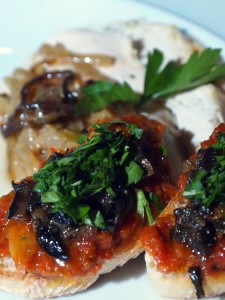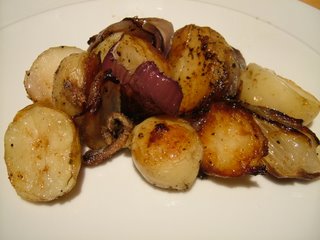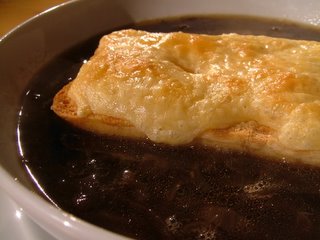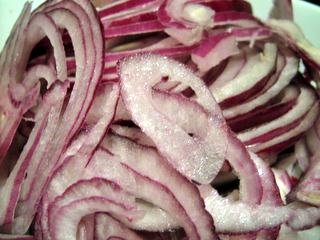 I’m back from a week at Disneyworld, where I actually lost weight, which should tell you all you need to know about the food there. Shouldn’t complain; it’s not every week you get to accompany your husband on a work trip to somewhere with rollercoasters, but there is only so much deep-fried food a girl can take. I ended up subsisting on toffee apples; a surprisingly effective weight-loss regime. More on all that in a later post; it was, after all, the Epcot Food and Wine Festival while we were there, so I do have something besides churros and overcooked steaks to write about.
I’m back from a week at Disneyworld, where I actually lost weight, which should tell you all you need to know about the food there. Shouldn’t complain; it’s not every week you get to accompany your husband on a work trip to somewhere with rollercoasters, but there is only so much deep-fried food a girl can take. I ended up subsisting on toffee apples; a surprisingly effective weight-loss regime. More on all that in a later post; it was, after all, the Epcot Food and Wine Festival while we were there, so I do have something besides churros and overcooked steaks to write about.
Back to the matter at hand. The only recipe I’ve ever seen for Poulet Antiboise comes from Elizabeth David’s A Book of Mediterranean Food. In that desert-island situation that never actually happens, but that we all like to fantasise about, Elizabeth David’s are the cookery books I’d rescue from the hold of my sinking ship – and I wouldn’t use them to make fires with. That fate is reserved strictly for that useless brick of a book from Prue Leith’s cookery school.
A Book of Mediterranean Food is David’s first book, and is now available (in the link above) in a hardback edition with her next two, French Country Cooking and Summer Cooking – well worth buying rather than the paperbacks, which tend to fall to bits if you use them much in the kitchen. These books were the fruits of her period living in France, Italy and Greece, and they ooze sunshine and good times. David’s style is unlike the very didactic recipe writing, full of precise times and measurements, that everybody uses these days (usually at the insistence of those reading and cooking from the recipes – a few years ago I decided to start specifying amounts of herbs in grammes rather than handfuls or sprigs, for example, after one too many worried emails asking me precisely how much basil you can fit in a fist). Her recipes are descriptive and give a clear idea of flavour and method, but without always giving particularly precise measurements, timings or even ingredient lists; all of which should leave you, the creative cook, with a world of experimentation and enthusiastic improvisation to enjoy over each dish.
This is a gorgeous recipe, where a chicken is buried in a giant heap of softened onions in a big casserole dish, then roasted until the onions collapse and make their own sauce with the chicken’s savoury juices, and served with typically Provençal flavourings. Rather than stirring olives into the sauce and serving the lot with fried bread triangles as in David’s original recipe, I’ve made a sort of deconstructed tapenade to spread on grilled crostini, which works a treat alongside the chicken’s richness. I’ve decreased the battleship-floating amount of olive oil that you’ll find in the original, added some shallots to the mix and added cooking times, temperature and a weight for your chicken below. I followed David’s original instruction to add a tablespoon or so of cream to the sauce at the end of cooking, but I’d encourage you to taste it first and decide whether or not you think it needs it; it’s just as good if you leave it out, so it’s not made it into the ingredient list below. Some French sautéed potatoes are a great accompaniment to this dish.
To roast one chicken, you’ll need:
1 roasting chicken, about 1.5kg
6 large onions
5 shallots
3 tablespoons olive oil
1 heaped teaspoon cayenne pepper
Salt and pepper
10 slices from a ciabatta
5 anchovy fillets
2 heaped tablespoons capers, drained
15 black olives, stoned (I like Greek dry roasted olives that come in a jar, like Crespo, for this recipe – additionally, they’re wonderfully cheap)
100g stupendous tomato sauce or sundried tomato paste
A handful of parsley. Ha. Take that, measurement emailers.

Preheat the oven to 180ºC (370ºF). Ferret around inside your chicken and remove any lumps of poultry fat, seasoning it inside with plenty of salt and pepper. Leave it to come to room temperature while you prepare the onions.
Slice the onions and shallots thinly, and sauté them with the cayenne pepper in the oil until soft but not coloured in a heavy-based pan large enough to take the chicken. I use a 29cm oval Le Creuset number which is perfect for pot-roasting a chicken. They’re pricey, but well worth asking for as a Christmas present; mine gets an awful lot of use.
Remove the pan from the heat and add the chicken, burying it upside-down in the onions, which should smother it completely. Put the lid on and roast for 90 minutes (you don’t need to check or baste the chicken while it’s cooking), by which time the chicken will be cooked through and tender, and the onions will have collapsed.
While the chicken is cooking, prepare your tapenade. Chop the capers and olives roughly. In a small frying pan, fry the anchovies with a teaspoon of olive oil, poking occasionally with a wooden spoon until they have “melted”. Add the capers and olives to the pan and sauté for a few minutes to meld the flavours. Remove to a bowl.
Grill the slices of ciabatta and shortly before serving, spread each slice with a teaspoon of tomato sauce and a teaspoon of the tapenade. Sprinkle with parsley and serve alongside the chicken.






